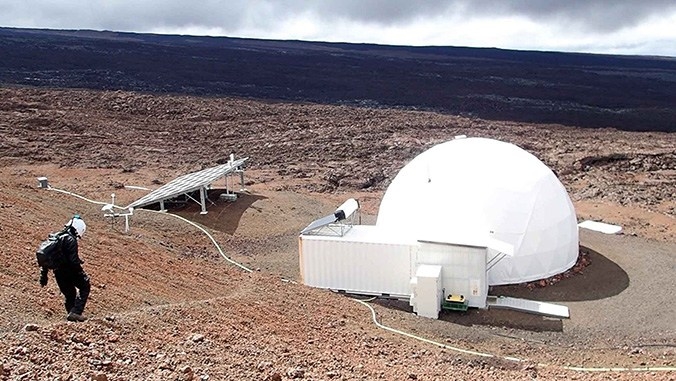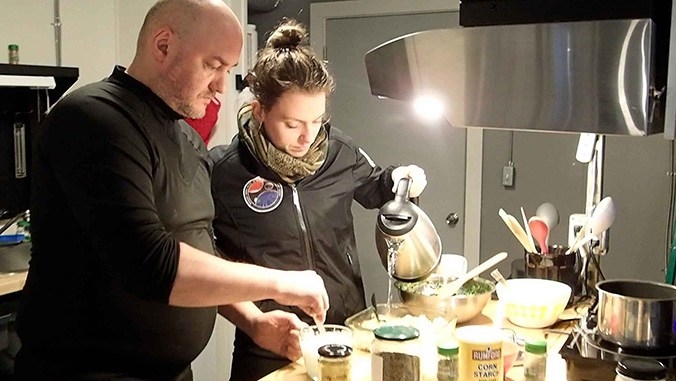Mock Moon-Mars Mission Wraps Up Wednesday in Hawaii

A two-week-long moon-Mars mission simulation will come to an end Wednesday (March 6).
The effort began Feb. 20 at the Hawaii Space Exploration Analog and Simulation (HI-SEAS) habitat on the slopes of Mauna Loa, a volcano on the Big Island. Since then, six crewmembers have been performing scientific experiments and testing technological instruments needed for the future exploration of the moon or Mars.
The mission is being conducted under the EuroMoonMars initiative, led by the International Lunar Exploration Working Group (ILEWG) of the European Space Agency (ESA).
Related: Life on Mars: Inside The HI-SEAS Isolation Habitat (Gallery)
This simulation has been done in collaboration with the International Moonbase Alliance (IMA), European Space Research and Technology Centre, Vrije Universiteit (VU) Amsterdam and HI-SEAS, which is operated by the University of Hawaiʻi at Mānoa.
Prototype moon base
The mock mission is part of a series of projects led by IMA, which is planning on building a base on the moon and a prototype outpost on the Big Island.
"These missions can be of much shorter duration than the previous missions that took place at HI-SEAS," said Michaela Musilova of the University of Hawaiʻi at Mānoa, chief investigator for HI-SEAS and IMA.
Breaking space news, the latest updates on rocket launches, skywatching events and more!
"These missions are open to researchers around the world to take part in, provided their research will help contribute to the exploration and colonization of the moon and Mars," Musilova said in a statement.
Musilova said that the crew's research has included geological and drone surveys, lava tube exploration and space technology testing. The crewmembers have also been cooking with shelf-stable ingredients and passing some of their free time playing cards.
Mission control
The mission control center for these missions is based at the Blue Planet Research laboratory on the Big Island, which is owned by IMA founder Henk Rogers.
ESA's Bernard Foing, executive director of ILEWG, has been serving as the space-crew communicator at the mission control center.
Musilova, who is also serving as crew commander, previously stated that the mission was off to a "very good start," in spite of some challenges with power cycling on and off and a temporary "disconnection from Earth."
Leonard David is author of the forthcoming book, "Moon Rush: The New Space Race" to be published by National Geographic in May 2019. A longtime writer for Space.com, David has been reporting on the space industry for more than five decades. Follow us @Spacedotcom or Facebook. This version of the story published on Space.com.

Leonard David is an award-winning space journalist who has been reporting on space activities for more than 50 years. Currently writing as Space.com's Space Insider Columnist among his other projects, Leonard has authored numerous books on space exploration, Mars missions and more, with his latest being "Moon Rush: The New Space Race" published in 2019 by National Geographic. He also wrote "Mars: Our Future on the Red Planet" released in 2016 by National Geographic. Leonard has served as a correspondent for SpaceNews, Scientific American and Aerospace America for the AIAA. He has received many awards, including the first Ordway Award for Sustained Excellence in Spaceflight History in 2015 at the AAS Wernher von Braun Memorial Symposium. You can find out Leonard's latest project at his website and on Twitter.



